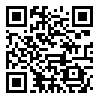مجله رویش روانشناسی از دادن گواهیهای کاغذی معذور است. لطفا تقاضا نکنید. همه گواهی ها در صفحه شخصی کاربران موجود است.
year 12, Issue 8 (autumn 2023 2023)
Rooyesh 2023, 12(8): 65-74 |
Back to browse issues page
Download citation:
BibTeX | RIS | EndNote | Medlars | ProCite | Reference Manager | RefWorks
Send citation to:



BibTeX | RIS | EndNote | Medlars | ProCite | Reference Manager | RefWorks
Send citation to:
Bayrami M, Ghadimi Bavil Olyayi N, Pakravan H. (2023). The relationship between repetitive negative thoughts and social anxiety in adolescents: the mediating role of cognitive fusion and experiential avoidance. Rooyesh. 12(8), 65-74.
URL: http://frooyesh.ir/article-1-4530-en.html
URL: http://frooyesh.ir/article-1-4530-en.html
1- Full professor, Department of Psychology, University of Tabriz, Tabriz, Iran.
2- M.A of clinical Child & Adolescent Psychology. Department of Psychology, University of Tabriz, Tabriz, Iran. ,negarghadimi2426@gmail.com
3- Ph.D. Student of psychology, Department of Psychology, Urmia University, Urmia, Iran.
2- M.A of clinical Child & Adolescent Psychology. Department of Psychology, University of Tabriz, Tabriz, Iran. ,
3- Ph.D. Student of psychology, Department of Psychology, Urmia University, Urmia, Iran.
Abstract: (1535 Views)
The present study was conducted to investigate the mediating role of cognitive fusion and experiential avoidance in the relationship between negative repetitive thoughts and social anxiety in adolescents. The method of the current research was descriptive-correlational. The statistical population includes all teenagers in Tabriz who were studying in the academic year 1401-1402, and 280 people were selected by the available sampling method. The data were collected using the Social Anxiety Scale (SPIN) by Kehor et al. (2000), and the short version of the Repetitive Thoughts Questionnaire (RTQ) by Ivey et al. Acceptance and Action (AAQ-II) by Band et al. (2011) were compiled. Data were analyzed using structural equation analysis. The results showed that negative recurring thoughts have a direct and positive effect on experiential avoidance and social anxiety (p<0.01). Also, the direct effect of experimental avoidance on social anxiety is positive and significant (p<0.05); However, the direct effect of negative repetitive thoughts on cognitive fusion and the direct effect of cognitive fusion on social anxiety is not significant (p>0.05). On the other hand, the indirect effect of negative repetitive thoughts on social anxiety through experiential avoidance is positive and significant (p<0.05); While the indirect effect of negative repetitive thoughts on social anxiety due to cognitive fusion is not significant (p>0.05). Therefore, it is concluded that experiential avoidance plays a mediating role in the relationship between negative repetitive thoughts and social anxiety, but cognitive fusion cannot mediate the relationship between negative repetitive thoughts and social anxiety.
Keywords: cognitive fusion, experiential avoidance, social anxiety, negative repetitive thoughts, adolescents.
Type of Article: Research |
Subject:
Clinical Psychology
Received: 2023/04/5 | Accepted: 2023/04/26 | ePublished: 2023/11/1
Received: 2023/04/5 | Accepted: 2023/04/26 | ePublished: 2023/11/1
Send email to the article author
| Rights and permissions | |
 |
This work is licensed under a Creative Commons Attribution-NonCommercial 4.0 International License. |







